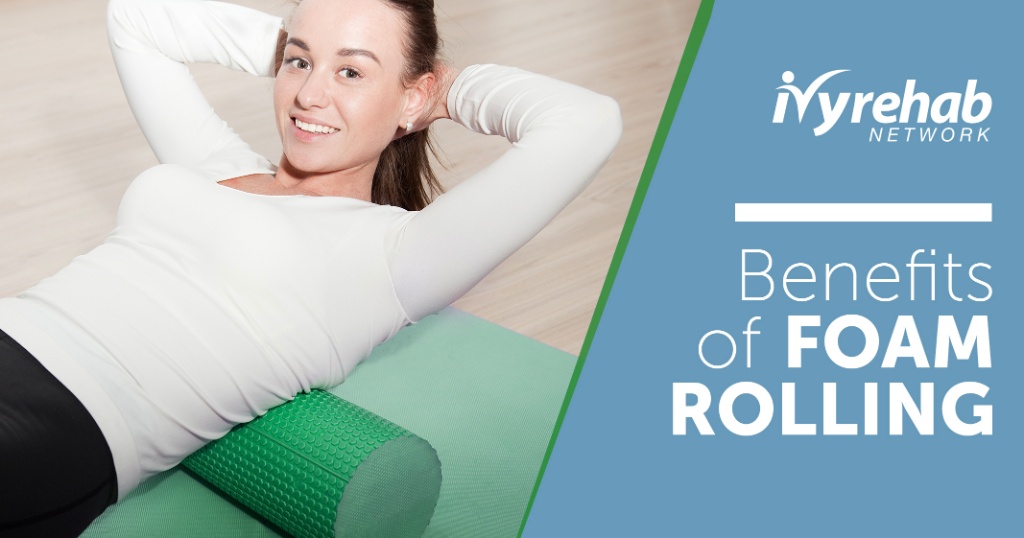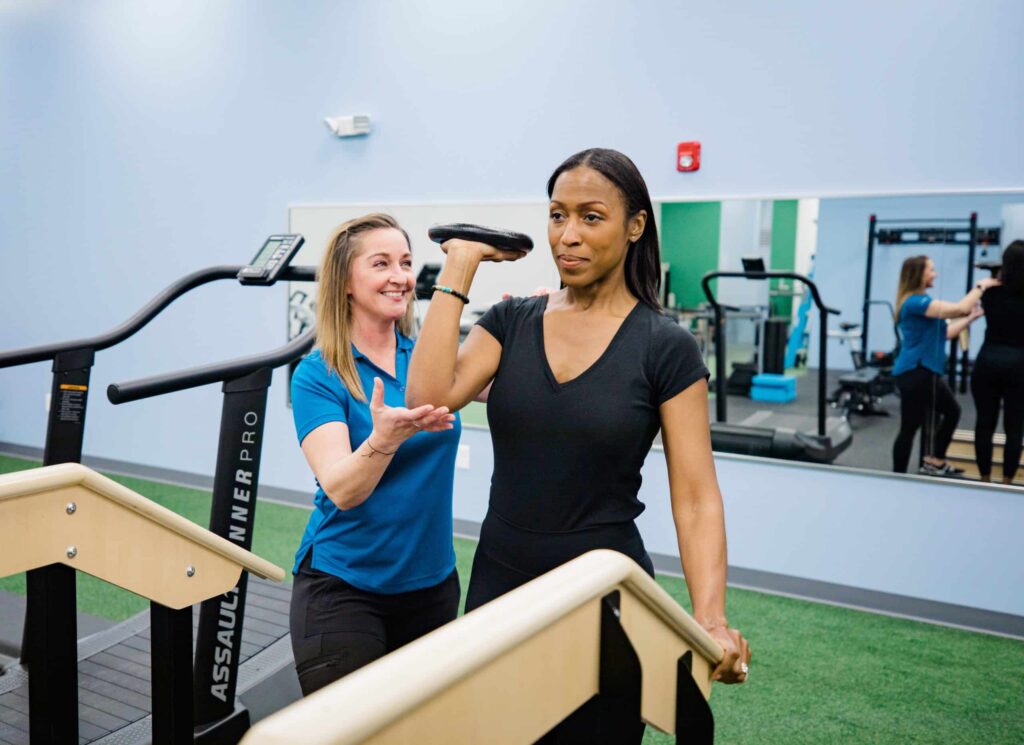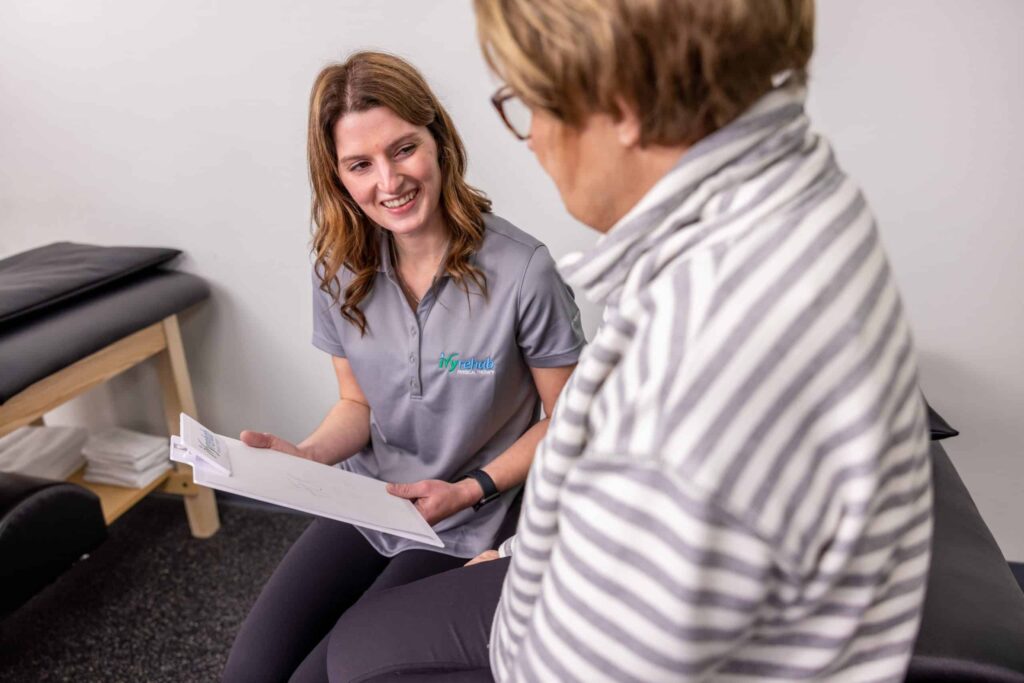This content was updated for accuracy and relevance on August 28, 2023
What is foam rolling, and how does it work?
Foam rolling is the act of taking a “Foam Roller” (a cylindrical tube of compressed foam) and rolling it under your body. These tubes come in a variety of different sizes, textures, colors, and ranges of firmness. Smooth foam rollers, textured foam rollers, massage rollers – the list goes on. By rolling on the foam roller using your body weight, it’s similar to giving yourself a massage, acting as a form of self myofascial release. Myofascial release is a form of rehabilitation physical therapy that can be useful for treating skeletal muscle immobility and pain by improving blood circulation, relaxing contracted muscles, minimizing inflammation, and stimulating the stretch reflex.
Why is foam rolling good for you?
Regular foam rolling can be extremely beneficial during prehab and rehab as it helps to reduce muscle tension and tension in the body, due to stress. Not to mention, foam rolling accelerates muscle recovery, boosts mobility, soothes muscle pain, and can also improve blood circulation and may even have a relaxing effect on the body. All of these health benefits of a foam roller can help with injury prevention and supporting any current injuries. The pressure of the foam roller on the tight muscle acts as a massager, releasing the tissue-layers in the body and potentially helping to lengthen the tense muscles.
Is it better to foam roll before or after a workout?
It is recommended to do foam roller exercise both before and after a workout, since before a workout can provide the most blood flow benefits and muscle tension relief. In addition, before a workout can decrease muscle density which can be a great warm-up. After a workout, foam rolling can help with speeding up muscle recovery and preventing delayed onset muscle soreness. Foam rolling immediately after can help your body go into the recovery state.
How long should you foam roll? Should you do it every day?
Each body is different; whether you’re preparing for surgery or looking into foam rolling for fitness and athletic performance, it is recommended that you first speak with a physical therapist to get expert advice on the frequency best for your condition. When it comes to physical therapy for athletes, most active individuals could benefit from doing a foam roller exercise routine for short periods of time every day, from five to twenty minutes. Or you could go for longer, doing a roller massage every other day.
Can you foam roll too much?
There are many disagreements between professionals about foam rolling too much. Some say you can’t really overdo it, while others say you can potentially overwork the muscles if you’re doing it too often, for too long. Foam rolling too hard for too long can potentially be harmful or leave you bruised. But doing it slowly and making sure to keep breathing can help your body ease into it. Make sure to listen to your body and if the pressure feels too extreme, make adjustments as needed. If you have a severe muscle tear or skeletal injury, first inquire with your doctor or physical therapy to get clearance on foam rolling.
What are some common techniques?
To experience foam roller benefits, it’s important that you target the right places; not all parts are equal! Below you’ll find a few tips and common techniques for prehab exercises:
- Hamstrings: Start by sitting down with your legs straight out in front of you. Place the foam roller on the back of your upper legs/thighs. With your arms supporting you on either side, lift your hips, and begin rolling your weight to one leg, applying pressure to the hamstring through the foam roller. Make sure to relax your muscles and hamstrings while doing this. Then repeat with the other leg.
- Calves: Static stretching is good for calves, but foam rolling is better in the long run for muscle fiber. Begin by sitting down with your legs placed out in front of you, and put the foam roller under your calf (lower leg). Place your hands on each side to support your weight, then lift your hips. Place your weight against the calf muscle, and roll from ankle to below the knee. Then do the same with the other leg. Roll out each calf for 30 seconds.
- Upper Back: The first step is to lie down on your back. Then, place a foam roller underneath your upper back. Raise your hips, so the weight is placed on the roller, then shift your weight to roll from the upper back to the middle of your back.
- Lower Back: Stay lying down, but position the foam roller so that it is vertical to your spine. Slowly and gently shift your body weight from side to side, making sure to keep the foam roller in line with your spinal cord.
- Hip Flexor: Sitting for extended periods can increase the muscle tightness in your hip flexor. Rolling out your hip flexor will help loosen the muscle tissue and the connective tissue. Begin the foam exercise by lying down. Face the floor with the foam roller under your hip flexor. Make sure you are in a forearm plank position and that your left leg is bent to the side. Then repeat with the right leg. Do the exercise for 30 seconds on each side.
- Gluteal Muscles: Sitting on the foam roller, position your right foot on the ground and your left foot crossed, resting on the opposite thigh, right above your knee. Stabilize yourself on the foam roller by placing your left hand on the floor behind your body. Using your body weight, tilt to the left and press your left glute into the foam roller. Gently roll back and forth several times, then switch sides.
Just as you would with a deep tissue massage, make sure to drink plenty of water after doing these at home physical therapy exercises using a foam roller. Staying hydrated is essential during the muscle recovery stage.
Want more information?
Looking to learn more about foam rolling, or want a physical therapist to assist with technique and provide additional options for muscle recovery? Book your screening at www.IvyRehab.com/book.
Article Reviewed by Holly Lookabaugh-Deur, PT, DSc, GCS, CEEAA
Holly Lookabaugh-Deur, PT, DSc, GCS, CEEAA is a practicing physical therapist and a partner and Director of Clinical Services at Ivy Rehab Network. Deur is board certified as a geriatric clinical specialist and certified exercise expert for aging adults with more than 35 years of clinical experience. She is certified as an aquatic and oncology rehabilitation specialist and serves as adjunct faculty at Central Michigan University and Grand Valley State University.







